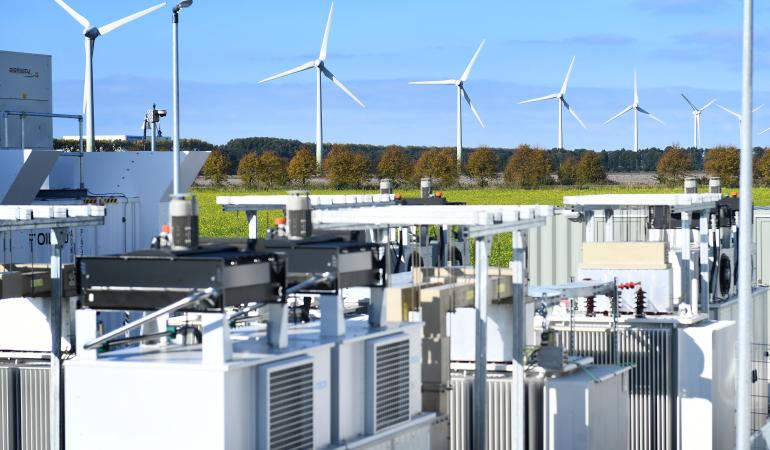
One new development in the energy sector is the temporary storage of renewable energy. For example, energy can be stored in a community battery. Research by RIVM shows that an accident with such a battery energy storage system could have consequences for people in the vicinity. Although the chances of this happening are small, it is good to take precautions. RIVM will prepare instructions on how to calculate the safe distance for such systems.
Temporarily storing renewable energy
Most renewable energy is generated when the sun is shining or when it is windy. However, these are often not the times when people use the most energy. We therefore need systems to store energy temporarily. Such battery energy storage systems can be as big as a shipping container. Due to the transition to renewable energy, more and more of these systems will be installed in the coming years – for example, as community batteries in a residential area.
Accidents unlikely, yet storage systems can be dangerous
RIVM has investigated the ways in which these storage systems could be dangerous to people in the vicinity. An accident with an energy storage system with lithium-ion batteries could result in a fire, an explosion or a toxic cloud. This has already happened a few times abroad and, on one occasion, also in the Netherlands.
The effects of an explosion and toxic cloud can be large, potentially leading to casualties in the vicinity of the accident. The likelihood of casualties is low, but it does call for precautionary measures.
Setting rules based on research
There is no national legislation yet on where these storage systems can be installed safely, such as rules on the minimum distance from houses. As part of a new study, therefore, RIVM will prepare instructions on how to calculate this distance precisely. RIVM recommends that the Ministry of Infrastructure and Water Management start taking these minimum distances into account in policy.